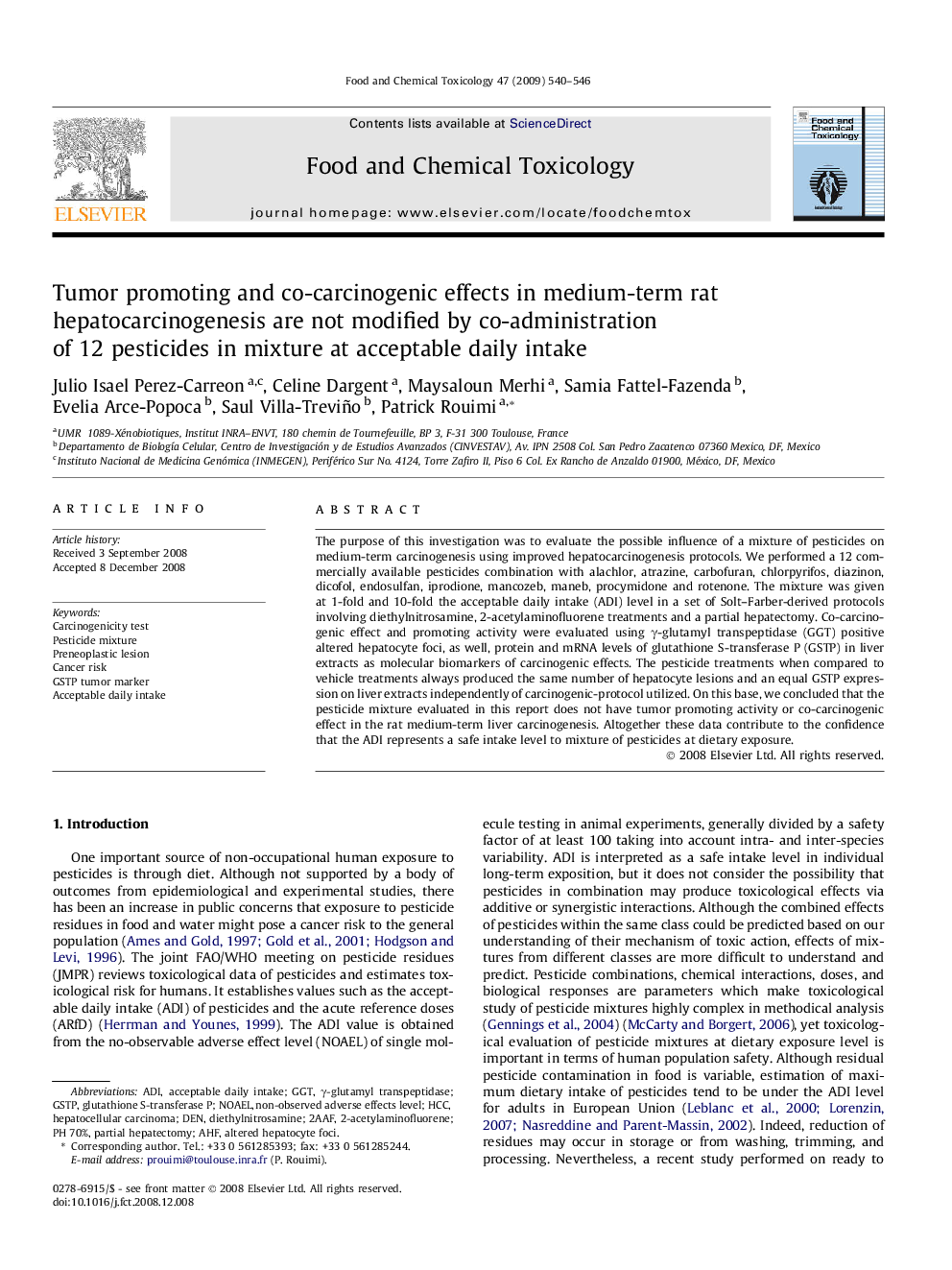| Article ID | Journal | Published Year | Pages | File Type |
|---|---|---|---|---|
| 2586532 | Food and Chemical Toxicology | 2009 | 7 Pages |
The purpose of this investigation was to evaluate the possible influence of a mixture of pesticides on medium-term carcinogenesis using improved hepatocarcinogenesis protocols. We performed a 12 commercially available pesticides combination with alachlor, atrazine, carbofuran, chlorpyrifos, diazinon, dicofol, endosulfan, iprodione, mancozeb, maneb, procymidone and rotenone. The mixture was given at 1-fold and 10-fold the acceptable daily intake (ADI) level in a set of Solt–Farber-derived protocols involving diethylnitrosamine, 2-acetylaminofluorene treatments and a partial hepatectomy. Co-carcinogenic effect and promoting activity were evaluated using γ-glutamyl transpeptidase (GGT) positive altered hepatocyte foci, as well, protein and mRNA levels of glutathione S-transferase P (GSTP) in liver extracts as molecular biomarkers of carcinogenic effects. The pesticide treatments when compared to vehicle treatments always produced the same number of hepatocyte lesions and an equal GSTP expression on liver extracts independently of carcinogenic-protocol utilized. On this base, we concluded that the pesticide mixture evaluated in this report does not have tumor promoting activity or co-carcinogenic effect in the rat medium-term liver carcinogenesis. Altogether these data contribute to the confidence that the ADI represents a safe intake level to mixture of pesticides at dietary exposure.
